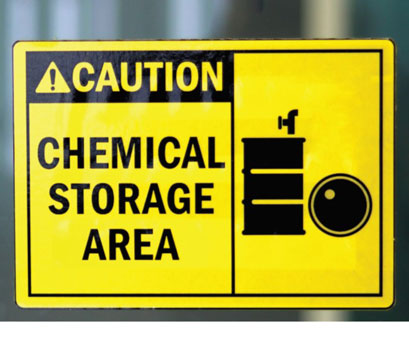The transition period for new global labelling and classification requirements for hazardous chemicals starts January 2021. By Meg Crawford
Before the introduction of the Globally Harmonised System of Classification and Labelling of Chemicals (GHS), hazard classifications for workplace chemicals differed all over the world. As a result, what was considered carcinogenic or flammable in one country wasn’t necessarily the same elsewhere. In response to this labelling chaos, the United Nations developed an internationally agreed set of standards for labelling chemicals for use across the globe. The key elements of the GHS included standardised safety data sheets (SDS), hazard testing criteria and warning pictograms.
Australia implemented the 3rd revised edition of the GHS (GHS 3) at the start of 2012. Since that time, GHS 3 has been the only system in Australia that could be used for developing labels and safety data sheets (SDS) for hazardous chemicals used in the workplace. However, in those eight years, we’ve lagged a little behind GHS developments internationally. In light of this, from 1 January 2021, Australia will commence a two-year transition period (wrapping up 31 December 2022) allowing for the implementation of the 7th revised edition of the GHS (GHS 7). Originally, the transition period for GHS 7 was slated for a 1 July 2020 start, but in recognition of the COVID-19 impact on businesses, the date has shifted back.
“Moving to GHS 7 under the model work health and safety laws keeps Australia up to date with our trading partners and international best practice for chemical assessment and hazard communication,” says Michelle Baxter, CEO, Safe Work Australia (the government statutory body, established in 2008 to develop national policy about workplace health and safety and workers’ compensation). “GHS 7 brings improvements that will continue to protect the health and safety of Australian workers.”
WHAT IS GHS 7?
While GHS 7 has a greater impact for manufacturers and importers of hazardous chemicals, suppliers and users must also be aware of the proposed changes. “GHS 7 brings changes to the classification and labelling requirements for aerosols, flammable gases and desensitised explosives,” Baxter explains. “There are also changes to the precautionary statements on hazardous chemical labels to provide more accurate information about how to eliminate or minimise the risks posed by chemicals.”
“Essentially, the changes relate to the introduction of some new hazard categories and classes for certain substances, including desensitised explosives, pyrophoric gases, chemically unstable gases and non-flammable aerosols,” adds Global Spill & Safety director Brad Lowson. “In addition to that, there are some updates to the precautionary statements, and that’s mainly around eye irritation. It really is a revision more than an update. The fundamentals are largely the same.”
GETTING READY FOR COMPLIANCE
The bulk of responsibility for implementing the GHS 7 changes falls with manufacturers and importers. “If you manufacture or import chemicals, you should review the changes to determine if the classification requirements for any of your products have changed,” Baxter urges.
However, users aren’t let off the hook entirely. That said, the steps during the transitional period are pretty straight forward, and Lowson has some useful tips to assist. “First of all, check that your labelling and SDS match up on your hazardous chemicals,” he says. “Next, check their dates. Particularly towards the end of December 2022, you need to check in with your suppliers and make sure that they’re observing the new requirements. Also, make sure that you have an appropriate person in your business to manage the updates to your labels and SDS. You need someone to champion that.”
As a director of a company with 30 years’ experience in providing Australian manufactured storage solutions for dangerous goods, Lowson’s next suggestions relate to the safe storage and control measures that should underpin the use of chemicals governed by GHS 7. “As always, make sure that your hazardous chemicals are stored safely and securely, and you have the correct spill equipment on hand so you can deal with any incidents safely and efficiently. Also, make sure that the storage and handling methods are up to date, meeting any new information or safety requirements or standards.”
USING HAZARDOUS CHEMICALS COVERED BY GHS 3
Happily, there’s no need to throw the baby out with the bathwater just yet, if you’re using chemicals governed by GHS 3. “During the transition period, users of hazardous chemicals don’t have to relabel or dispose of existing stock,” Lowson explains. “It’s okay to keep using, handling and storing them, so long as they’re labelled in accordance with GHS 3 and manufactured and imported before 1 January 2023.
“After 1 January 2023, companies shouldn’t be accepting anything that’s not classified or labelled in accordance with GHS 7 or has an SDS that’s not drawn up to comply with GHS 7. It’s really going to be at the back end of 2022 that people will need to pull their socks up and make sure everything is in line.”
Go to safeworkaustralia.gov.au/ghs-7-transition for more information.






